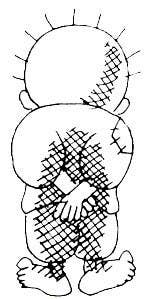
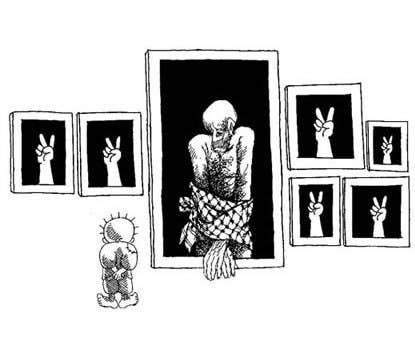

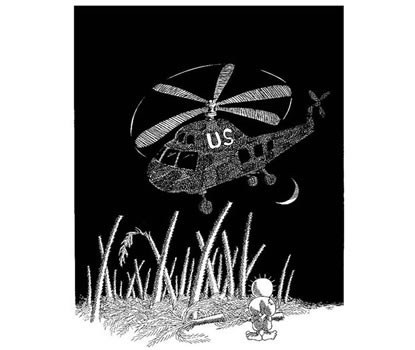

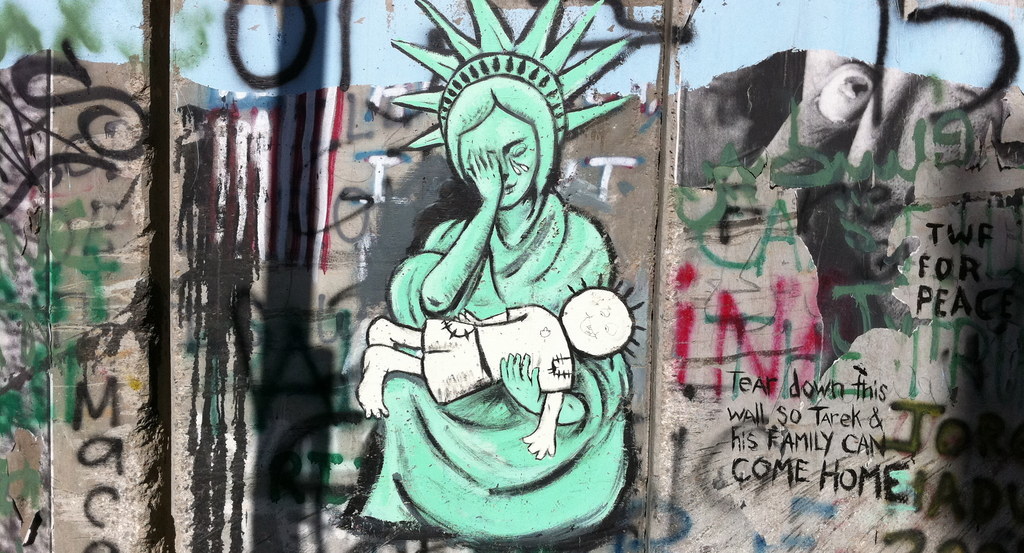
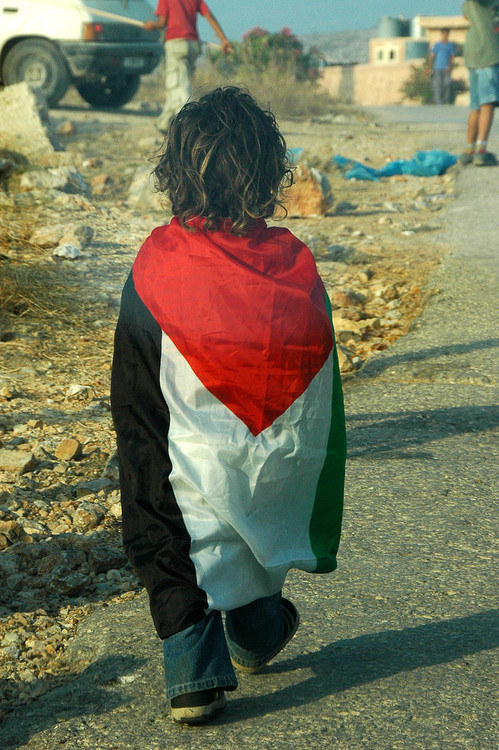
The brainchild of the late Palestinian cartoonist Naji al-Ali, Handala – with his tattered clothes and thorny hair – stands as a symbol for the Palestinian refugees expelled or forced to flee from their ancestral home by Zionist militias carving out the Jewish state of Israel between 1947-48. This defining moment in Palestinian history is known as the Nakba. (Read about the Nakba through the eyes of a Palestinian teenager and read about the Palestinians before their diaspora.)

Naji al-Ali dedicated his life to illustrating the plight of the hundreds of thousands of Palestinians who became refugees scattered throughout the Arab world, and between 1975 and 1987 Handala appeared in numerous drawing. “The child Handala is my signature, “al-Ali once said, “everyone asks me about him wherever I go. I gave birth to this child in the Gulf and I presented him to the people. His name is Handala and he has promised the people that he will remain true to himself. I drew him as a child who is not beautiful; his hair is like the hair of a hedgehog who uses his thorns as a weapon. Handala is not a fat, happy, relaxed, or pampered child. He is barefooted like the refugee camp children, and he is an icon that protects me from making mistakes. Even though he is rough, he smells of amber. His hands are clasped behind his back as a sign of rejection at a time when solutions are presented to us the American way.”

As now millions of Palestinians remain refugees and barred by Israel from their United Nations-recognized ‘Right of Return’, Handala stands as a timeless testament to the Palestinian commitment to return to their lands and homes: “Handala was born ten years old, and he will always be ten years old. At that age, I left my homeland, and when he returns, Handala will still be ten, and then he will start growing up. The laws of nature do not apply to him. He is unique. Things will become normal again when the homeland returns.” (Read about the 'Right of Return'.)

The key represents the determination of refugees to return to their homes. Till this day many Palestinian refugees still keep the keys to their homes.

In a book review of “A Child in Palestine: The Cartoons of Naji al-Ali,” Professor of Arabic Literature and Culture at UNC-Chapel Hill Nadia Yaqub writes, “Handhala appears in most of al-Ali’s cartoons, mutely watching the economic and military violence, corruption, and moral bankruptcy that is the subject of most of his work. Because of his stature in the Arab world as an unflinching critic of corruption, exploitation, and political expediency al-Ali, whose work appeared daily in Arabic-language newspapers from the late 1960s until his assassination in 1987, is revered today not only as a creative artist but also as a principled voice for the downtrodden.”

Naji al-Ali spared no one in his “biting critique of all powerbrokers—Israeli, American, Arab, and Palestinian.” Even Palestine Liberation Organization (PLO) chairman Yasser Arafat was ridiculed. It was this unbending critique “that may have cost him his life.” The circumstances of al-Ali’s death are murky. On 22 July 1987, as he was leaving the London office of a Kuwaiti newspaper he was shot in the face by a suspect later identified as a 28 year old Palestinian who claimed membership in the PLO. According to some experts, PLO head Arafat resented al-Ali for drawing a cartoon eluding to an extramarital affair Arafat was having while residing in Tunisia. The PLO denied any involvement and it was subsequently revealed that the suspect was a double agent for the Israeli intelligence outfit Mossad. The Mossad had advanced knowledge of the assassination (and some Palestinians claim it was behind the hit) and its failure to pass along the information to British police led UK Prime Minister Margaret Thatcher to expel three Israeli diplomats and close the Mossad base in London.

Although al-Ali’s life was cut short, his work survives him. And on the walls of refugee camps, to Israel’s separation wall, to necklaces and keychains, to endless homages, Handala remains a powerful and widely adopted symbol of the Palestinian struggle for self-determination, for “permission to narrate” their story, in the words of Edward Said, and the return of the refugees.

“I presented him to the poor and named him Handala as a symbol of bitterness. At first, he was a Palestinian child, but his consciousness developed to have a national and then a global and human horizon. He is a simple yet tough child, and this is why people adopted him and felt that he represents their consciousness.”
To learn more about Palestinian history and culture visit the Institute for Palestine Studies.
